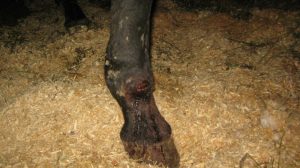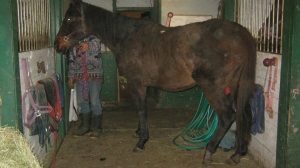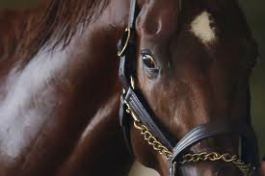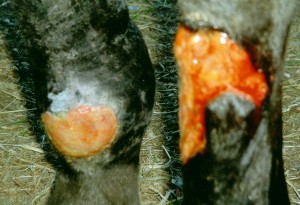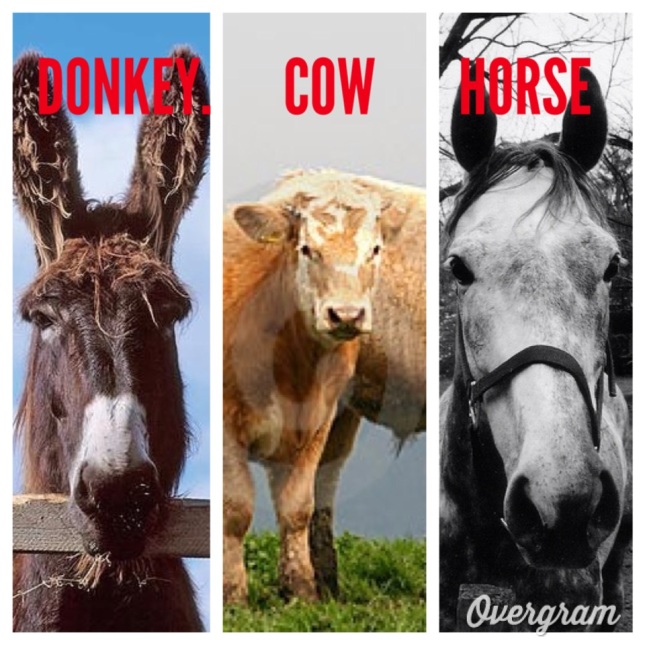
In the wake of shocking discovery that many so-called beef products actually contained up to 100% horse meat, many of those involved are rushing to reassure the outraged consumers that there is no cause for concern. So what if it was really horse (or in some cases donkey)? So what if they found traces of Phenylbutazone in three horse carcasses exported from the United Kingdom? Some food safety officials are insisting that the meat is still safe for human consumption. Oh really? I think not…
This is a serious problem. It isn’t like they just mis-labeled two different cuts of the same meat. Consumers thought they were buying BEEF when they were really buying HORSE and/or DONKEY meat. If the food safety officials cannot be bothered to ensure that the meat being sold came from the same species of animal listed on the product label, that does not make me feel that they are doing their best when it comes to monitoring which foods are fit for human consumption. The companies involved are now blaming some mishap in the supply chain.
I do recognize that there are cultural differences and some cultures enjoy eating horse and donkey meat. I accept that. I would not recommend it due to the health risks involved but they are free to chose for themselves. The people who bought Findus Beef Lasagne, U.K. Tesco’s Spaghetti Bolognese, and Aldi brand frozen lasagne and Spaghetti Bolognese, and numerous products by other companies believed it was beef. I am sure that many horse owners would not be pleased to find that they have just eaten someone else’s horse. Other people may have deeply held religious or moral objections to eating horse meat. Imagine the shock and horror this supposed labeling mistake has caused.
If this had only happened once in a small batch of a single product, then calling it an accident might be justifiable. The current scandal has spread too far for that explanation to be plausible. A leak from Findus has revealed that horse meat was in the so-called beef for six months. A leaked document states that the French supplier, Comigel, had been aware of the problem in its frozen lasagna since August of 2012. Tests of all the contaminated products have now shown that between 30% to 100% of the meat used was horse meat. It isn’t as if they just found traces of horse meat. In some products, it had completely replaced the beef that should have been used.
http://rtfitchauthor.com/2013/02/08/findus-leak-reveals-tainted-horse-meat-in-beef-for-six-months
First Ireland, then Poland, and now Romania have all been suggested as potential sources for the meat now in question. The horse meat and also possibly donkey meat has been linked to a supplier in Romania. The desperate attempts to explain how such a mistake occurred vary. Some have suggested that there was an abundance of both horses and donkeys available for slaughter due a recent law banning the use of the animals to pull carts and carriages in that country. http://www.mirror.co.uk/news/world-news/horse-meat-scandal-fears-donkey-1704334 Another article reports that 54 wild horses stolen from Letea Forest were found aboard a truck destined for a Romanian slaughterhouse. The wild horses had been beaten, stabbed, and deprived of food and water. Four of them had already died on the way to the abattoir. http://rtfitchauthor.com/2013/02/13/nabbed-stabbed-and-beaten-wild-horses-to-go-into-uk-beef/
The Romanian officials are adamant that the horse meat was not sold as beef and place blame on two French companies. Both Comigel and Spanghero are now being investigated. The horse meat was shipped to a factory owned by Comigel in Luxembourg. From there, it made its way into frozen foods distributed to 16 European countries. Asda has found horse meat in four burger products last month and more recently in Beef Bolognese Sauce. Horse meat has also been found in cottage pies destined for 47 schools in Lancashire. Compass Group has identified between 5% and 30% horse meat in burgers sold in Ireland. Those burgers were purchased from Rangeland Foods, which has now withdrawn around 9,000 burgers after some of them were shown to contain horse meat. Minced ‘beef’ sold to Creative Foods was made into lasagna for schools and hospitals. That meat came from Pinnacle Foods, which had found horse meat in some of its products. The company claims it was not aware of the horse meat and it is now trying to find out how this happened. New sources of foods either with a mixture of a beef and horse meat or complete substitution of horse meat for beef are still being found. The companies are pulling products that have tested positive for horse meat and other similar products as a precaution. The scandal may continue to grow as more products are tested for the presence of horse meat… http://www.bbc.co.uk/news/uk-21476736
Food Safety officials in the United Kingdom have started testing all slaughtered horses for the presence of Phenylbutazone as of January 30th, 2013. This testing should have already been mandatory before any horse meat was used for human consumption. Even if the meat is tested, the results can vary depending upon which parts of the horse carcass are checked. If you want a negative result, pull samples of the fat tissue. The chances of finding Bute are very slim. If you really want to know how much Bute a horse was given, take tissue samples from the kidneys, liver, lungs, or heart. The kidney will usually show the highest amount. The slaughterhouses deem the kidneys as unfit for use in food so they are rarely tested. Some British veterinarians are now insisting that there is no cause of concern. They say that Phenylbutazone is necessary for long term pain management in horses. I disagree. After many years of working with Thoroughbred race horses, I have seen very clearly what happens if you dose a horse with Bute for long periods of time. Some horses are more sensitive than others but take 1 gram of Bute per day as an example. Within 30 days, it will cause stomach ulcers. After that, the horse starts to show signs of kidney damage. Keep dosing with Bute and wait for Liver Failure. That’s all with a dose of 1 gram per day. Horses with broken bones or severe injuries are sometimes given between 2 and 4 grams or more per day. Long term use of Phenylbutazone will more than likely kill your horse. Do you really think it’s safe to have in your food?
Decades ago, Phenylbutazone was prescribed for human use. People used it for the treatment of arthritis and other ailments. There are still some people who will get the drug from a veterinarian for their horse and then use it for themselves despite the warning label and the list of potential dangers. It was banned for use in humans for good reason. Phenylbutzone (PBZ) is converted by the liver into its metabolite, oxyphenylbutazone.
“Oxyphenylbutazone has NSAID properties and at one time was thought to be less toxic than PBZ. However, oxypheylbutazone also has serious adverse effects in humans including those of producing aplastic anemia, agranulocytosis, thrombocytopenia, leucopenia, pancytopenia, and hemolytic anemia (Chaplin 1986). The mortality rate of PBZ- and oxyphenylbutazone-induced aplastic anemia was 94% and 71%, respectively (Benjamin et al., 1981; Bottiger and Westerhom, 1973; Cameron et al., 1966; Chaplin 1986; Deaths due to butazolidin, 1952; Dunn, 1972; Etess and Jacobson, 1953; Hale and DeGruchy. 1960). Overall the data suggest that the risk for the development of lethal adverse effects in humans by PBZ and oxyphenylbutazone are not always dose dependent indicating an idiosyncratic effect. In addition to its well-known bone marrow suppression effects, PBZ is also associated with a hypersensitivity reaction in the liver which can cause death. (Benjamin and Ishak, 1981). Taken together, it is clear why phenylbutazone is currently unavailable for human use in the United States and is banned in animals destined for human consumption.”
–Nicholas Dodman, Nicholas Blondeau, and Ann M. Marini
Association of phenylbutazone usage with horses bought for slaughter: A Public Health Risk.
Food and Chemical Toxicology
http://www.equinewelfarealliance.org/uploads/Food_and_Chemical_Toxicology_FINAL.pdf#page4
There are reasons why phenylbutazone is banned for use in humans and in any animal intended for human consumption. There is no way to know how it will affect different people. One person might able to tolerate phenylbutazone while another person might be hypersensitive. That makes it impossible to determine a safe level. The only way to ensure complete safety is to prevent any meat contaminated with phenylbutazone from entering the food chain. This has proven to be far more difficult that it sounds.
In countries where horses are raised specifically for food, it should be simple enough to achieve. No horse intended for human consumption can be treated with Bute. The trick is making sure no one gives the horse any Bute during the course of its life. Veterinary records might show no administration of phenylbutazone when in reality the owner obtained the drug elsewhere and used it on the horse without telling anyone. It is also unlikely that the horse will have the same veterinarian throughout its life. The owner could have two different veterinarians treating the same horse. If the horse is sold, the new owner may not receive the horse’s veterinary records or unscrupulous owners might substitute the records of one horse that was never given Bute for those of a horse that did receive it. This would allow the owner to send the horse dosed with Bute off to the slaughterhouse and no one would know. Efforts have been made to develop a passport that would stay with the horse for life but that system is still in need of vast improvements. At the time of writing, those involved in the horse meat trade have been forging passport documents in order to get the slaughterhouses to accept horses that are unfit for human consumption. The BBC has reported that as many as 7,000 unauthorized horse passports have been in use since 2008. The report does not mention whether or not any of those thousands of horses went to slaughter. Beginning in 2009, all foals born in the UK are being micro-chipped in an effort to make sure they can be positively identified in the future. *http://www.bbc.co.uk/news/science-environment-21430330

Moving on to countries where horses are not raised for food and an entirely new set of problems. All of the concerns listed still come into play but there is even more opportunity for fraud and abuse. In the United States, the USDA does not currently inspect horses intended for slaughter. The animals are shipped alive across the borders to both Canada and Mexico, where slaughterhouses await them. Because horses here are not raised for food, there are no restrictions on what medications can be given to the horse or what substances can be applied topically to the animal. If you want to give your horse 1 gram of phenylbutazone every day, no one will stop you. If you want to apply large quantities of Nitrofurazone ointment to your horse’s body, go ahead. That ointment clearly states on its label that it isn’t intended for use on food-producing animals but there are no slaughterhouses currently operating in the U.S. You can take that horse loaded up on Bute and covered in Nitrofurazone to a horse auction and sell it. Two possibilities: The animal might be bought and taken to a new home or the horse may also be bought by a meat man or kill buyer (KB), who is buying horses cheap so he can ship them to Canada or Mexico for slaughter.
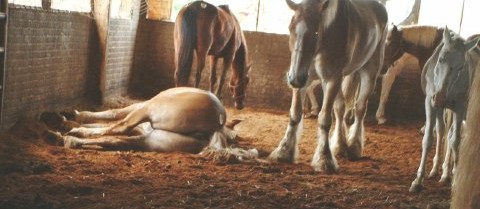
After the auction, neither buyer would have any records on the horse unless the previous owner chose to provide them. With no way of knowing if a horse is free from drugs or fit for slaughter, the KB can fill out paperwork or create any documents he needs. He will fill out an E.I.D. stating that to the best of his knowledge, the horse is clean and safe for human consumption. That’s all that it takes. The horse can now become part of the food chain. This happens on an almost daily basis.
If you were going to choose a horse to slaughter for human consumption, a racehorse is probably the absolute worst choice you could possibly make. They are loaded up with an amazing variety of drugs, hormones, chemicals, and in some cases dosed with actual poison. Whatever it takes to make them run faster. Try to find a racehorse that has never been dosed with Phenylbutazone. You have better odds of finding a unicorn. It would take hours to catalog everything and the trainers come up with new concoctions all the time. Here are some highlights. These are items commonly used at the racetrack that all appear on the Canadian Food Inspection Agency’s list of banned substances; Phenylbutazone, Clenbuterol, Equipoise, and Nitrofurazone. http://www.inspection.gc.ca/english/fssa/meavia/man/ch17/annexee.shtml Some trainers also use snake venom (Rattlesnake or Cobra if they can get it) to dose their horses before racing. Others have been caught giving their horses milkshakes (mixture of sodium bi-carbonate and other things). Trainers will use illegally-obtained prescription drugs intended for humans, including PROCRIT and more commonly EPOGEN. This is highly illegal even at the racetrack. They are certainly not going to tell their veterinarian or any racing officials what they gave the horse. There will be no record of it. When I worked at the track, one of the horses in my trainer’s barn received 14 different injections before each race. I cannot even tell you everything they shot into that horse. Whatever it was, it helped him win for them and that was all that mattered. Other things they used in their barn included Bell’s Solution (a liquid narcotic), DMSO, chlorine beach, glycerine, and formaldehyde. But none of this matters, right? Racehorses aren’t slaughtered for human consumption. Oh, but they are slaughtered by the thousands in Canada and Mexico. Their meat is shipped to the EU and sold as food. All those products filled with horse meat instead of beef could contain meat from racehorses.
You might expect some form of testing at the slaughterhouses to see if the horse is loaded up with Bute BEFORE the animal is slaughtered. That isn’t how things are done at the present time. That would decrease the number of horses they could kill in a day. Some plants are able to slaughter as many as 100 horses per day. Not all of the meat is tested. Random samples are taken from some of the carcasses, not all of them. Mistakes do happen. Horses that are not fit for human consumption do get slaughtered. Not all of the horses are processed for food. Some of the plants also produce other products. From a food safety standpoint, I do not want the facility that produces my meat to multi-task. At Les Viandes de la Petite Nation in Canada, they slaughter beef, bison, deer, sheep, horses, and pigs all at the same facility. The company’s website boasts that it can provide complete traceability from the farm to the consumer. This is a rather curious statement since they slaughter horses from the United States where there are no farms raising horses specifically for slaughter. It would be safer if the slaughterhouses were strictly slaughtering for human consumption and slaughtering for other purposes at a different location. That would greatly reduce the chance of accidents. The only people who really know where the meat from a particular carcass went are the operators of the slaughterhouses.
Unless a horse has a scar, brand, tattoo, microchip or some other permanent marking, it can be very difficult to prove that the horse now standing in the slaughter pen is the same horse whose records from the racetrack show multiple injections of Phenylbutazone. With Thoroughbreds, the easiest way to read the tattoo on the inside of their upper lip. Contact the Jockey Club and they will identify that horse. From there, a quick search of Equi-Base or similar websites will show where the horse raced and under what conditions. You can get veterinary records from the racetracks. Proof that the horse was given Phenylbutazone or other banned substances should prevent it from being slaughtered for food. That is what saved Canuki and Cactus Cafe from being slaughtered in 2012. When the plant in Richelieu, Canada was provided with records from Beulah Park Racetrack in Ohio, USA, the horses were rejected for slaughter. They were returned to the United States and both are now being retrained as show horses. Their story is a miracle. Many other horses have not been so fortunate…
PRINCESS TIFFANY, BACKSTREET BULLY and MORE…
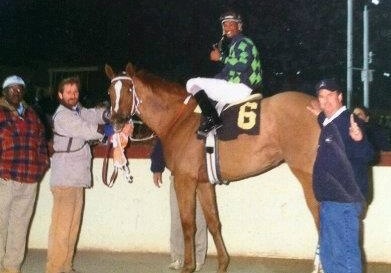 Princess Tiffany slipped through the cracks. Somehow, through a twist of Fate, she ended up in the hands of kill buyer. Of course, being a racehorse, she had been dosed with Phenylbutazone during her career. The story gets worse. She was given additional doses of Phenylbutazone while in the kill buyer’s possession. That didn’t stop the plant from accepting her for slaughter. They killed her anyway. The injection sites would have been clearly visible once they began processing the carcass.
Princess Tiffany slipped through the cracks. Somehow, through a twist of Fate, she ended up in the hands of kill buyer. Of course, being a racehorse, she had been dosed with Phenylbutazone during her career. The story gets worse. She was given additional doses of Phenylbutazone while in the kill buyer’s possession. That didn’t stop the plant from accepting her for slaughter. They killed her anyway. The injection sites would have been clearly visible once they began processing the carcass.
 Backstreet Bully was the victim of an equine adoption gone bad. When he retired, his connections allowed him to be adopted. After he was in his new home, things took a tragic turn. On January 9th, 2013, he was slaughtered at Les Viandes de la Petite Nation in Canada despite the drug records provided by Adena Springs proving that he was unfit for human consumption. The slaughterhouse was well aware that this horse had been given drugs that made him ineligible for slaughter. Yet the plant still took his life. The meat from his carcass may have been used for something other than food.
Backstreet Bully was the victim of an equine adoption gone bad. When he retired, his connections allowed him to be adopted. After he was in his new home, things took a tragic turn. On January 9th, 2013, he was slaughtered at Les Viandes de la Petite Nation in Canada despite the drug records provided by Adena Springs proving that he was unfit for human consumption. The slaughterhouse was well aware that this horse had been given drugs that made him ineligible for slaughter. Yet the plant still took his life. The meat from his carcass may have been used for something other than food.
Or that meat may have ended up as someone’s dinner…
Many other horses have met the same end; Deputy Broad, Beau Jacques, Silky Shark, River Spey, and No Day Off just to name a few. The difference being that with Princess Tiffany and Backstreet Bully, proof was available. The others went so quickly that there wasn’t time to get the information and send it to the slaughterhouses. Most of the plants have a room where they keep the severed heads of the dead horses. The tattoos still on the Thoroughbreds would probably prove that the problem is far more wide-spread than anyone has imagined.
In July of 2012, both Phenylbutazone and Clenbuterol were found in horse meat shipped from Canada to Belgium. That meat was sent to many European countries including Belgium, France, Luxembourg, and the Netherlands. (Wait. Luxembourg? Isn’t that where one of Comigel’s factories is? Remember that Comigel first notified Findus of a problem in August of 2012? Must be a coincidence…) It is entirely possible that some of the horse meat being found in all those frozen meals came from Canada, meaning meat from horses raised the United States may have been mixed into it. This possibility led the Humane Society International to ask the EU for a ban on all horse meat from North America. http://www.hsi.org/world/europe/news/releases/2013/02/findus_horse_meat_scandal_eu_020913.html
Recent reports from Food Safety officials in the United Kingdom have revealed that 6 horse carcasses have tested positive for Phenylbutazone. Three of them were exported to France and may now be part of the food chain. Despite the much stricter regulations from EU, Bute could still make its way onto someone’s dinner plate. Kill Buyers are quite clever when it comes to finding ways to cheat the system. The Daily Mail reported that Peter Boddy of West Yorkshire and owner of an abattoir, was also under contract with Aintree Racecourse to dispose of their dead horses. Aintree claims that there is no way any of those dead Thoroughbreds were used for food. One would certainly hope not. Still, it looks very bad when the person you hired to take away the carcasses also happens to own his own abattoir. Those 6 carcasses that were found to contain Bute had to come from somewhere. They may not have come from his abattoir but this just illustrates the scope of the problem.
http://www.dailymail.co.uk/news/article-2278379/Yorkshire-abattoir-boss-Peter-Boddy-caught-horse-meat-kebab-scandal-deal-Aintree-racecourse.html
Under the current system, it is very difficult to trace where a particular batch of meat originated. That makes it even more difficult to be certain that the meat is fit for human consumption. Even if the system within the EU can be fixed, the meat imported from Canada and Mexico will still be a nightmare. They aren’t following the regulations to the letter right now. New regulations are being put into place in July, 2013. I highly doubt they will follow those either. There are too many greedy people who make their living as part of the horse slaughter industry. They will always put profit ahead of safety. Nothing short of large fines and years in prison will change that. All of them will continue denying responsibility and blaming others for the mistakes. Business as usual.




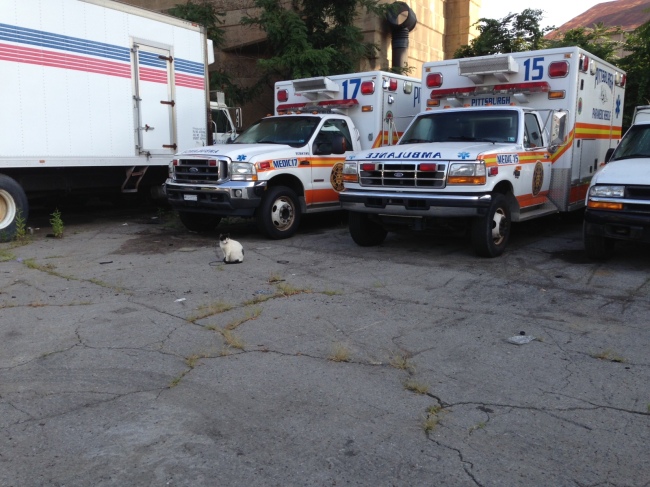
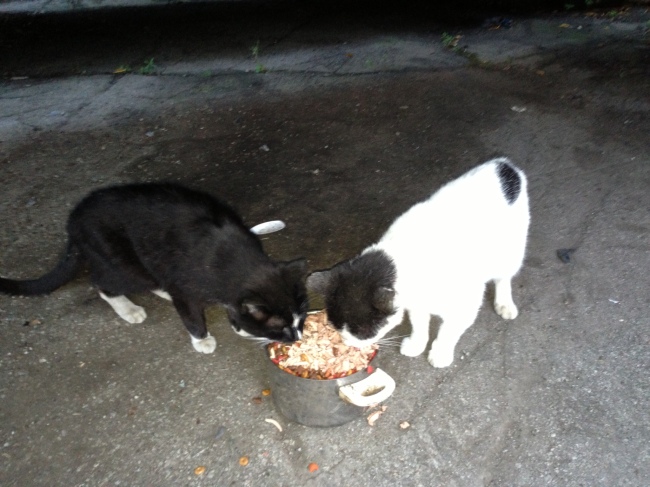

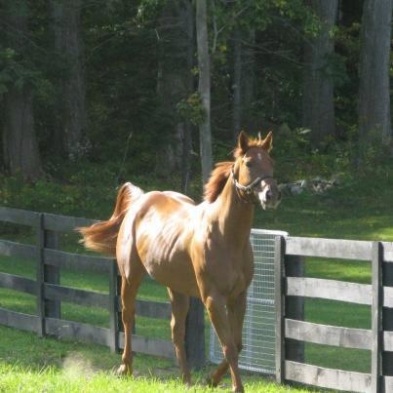
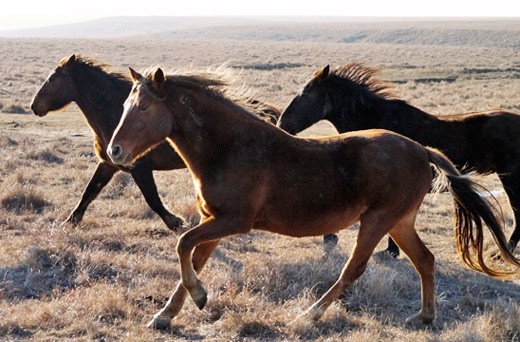
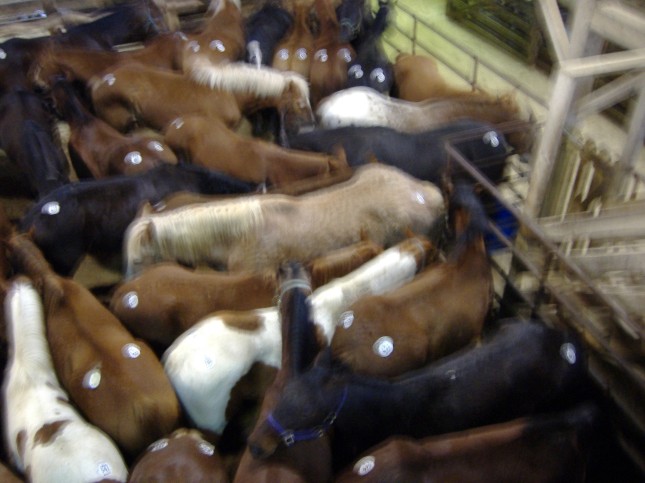

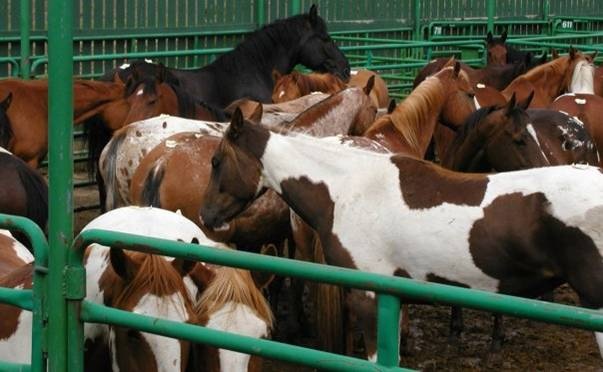
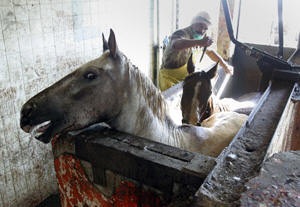
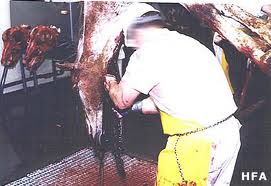
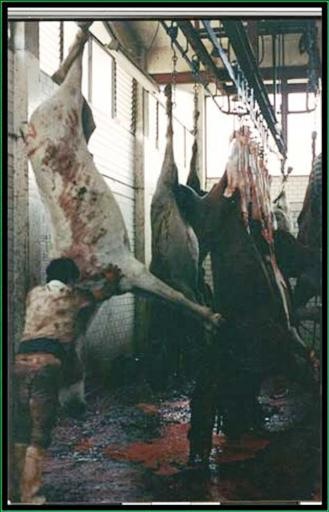
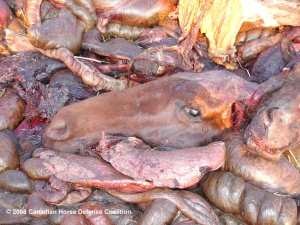
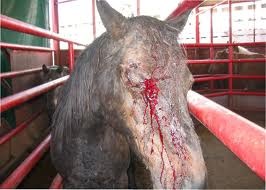
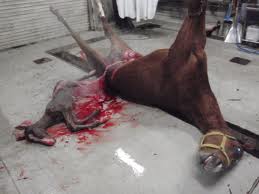





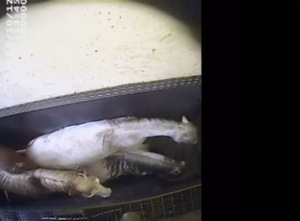


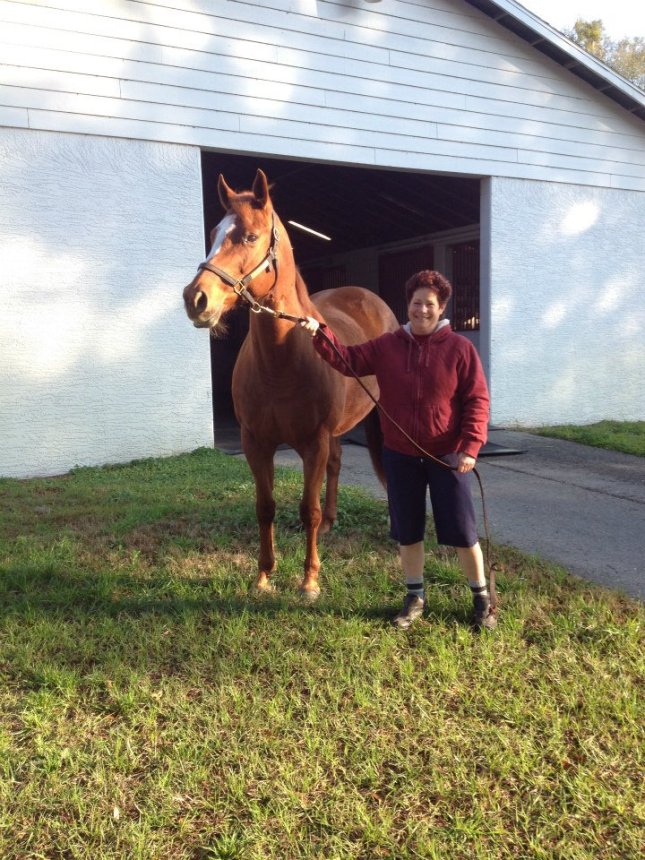
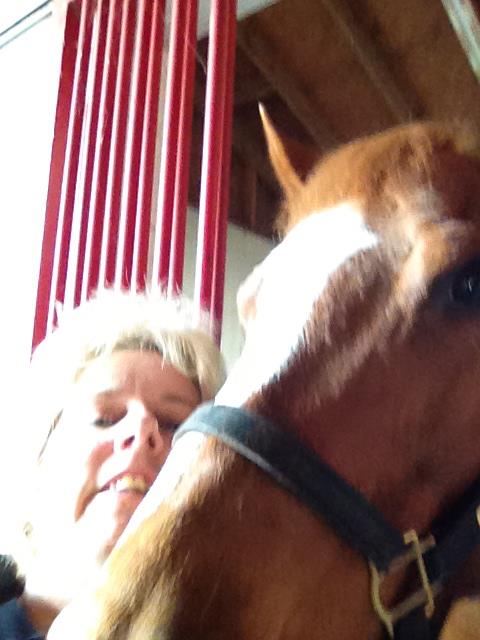
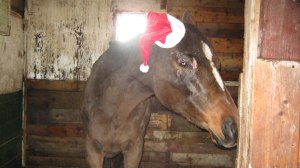 Ju
Ju

